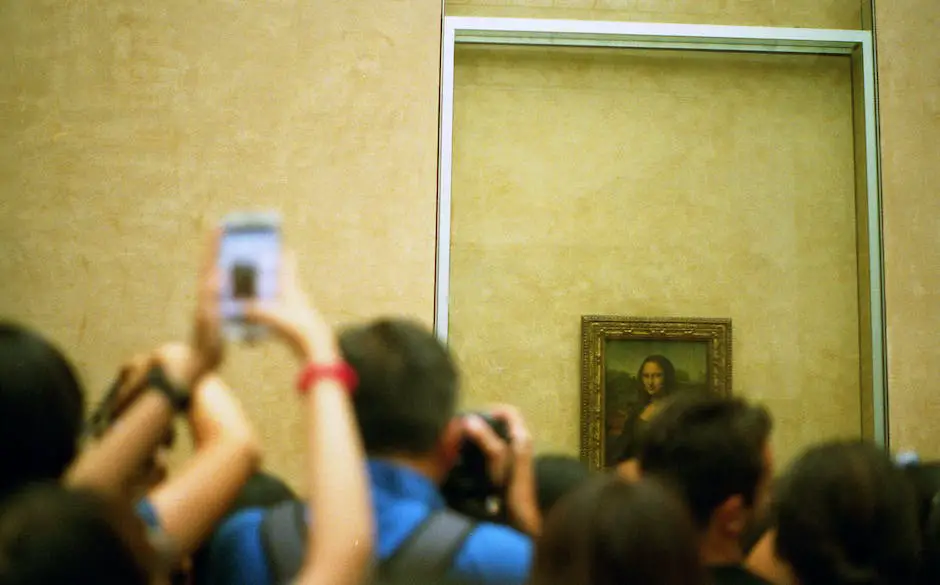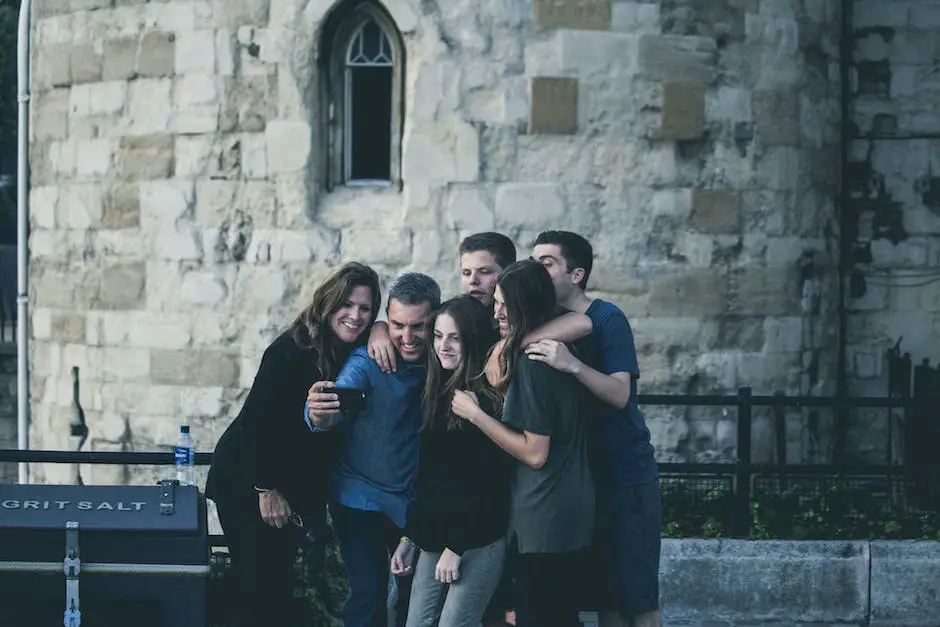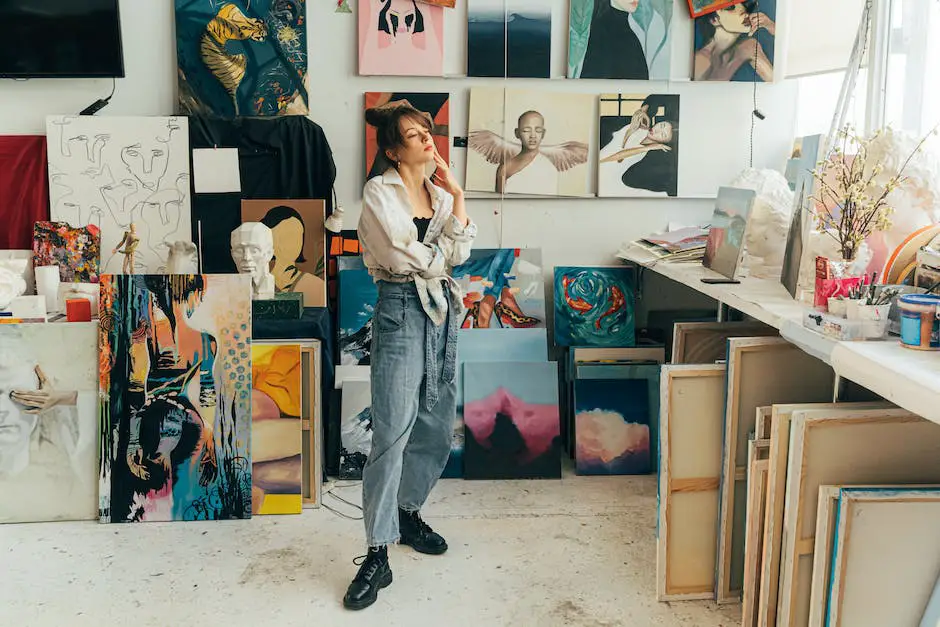Mona Lisa Selfies: Art Meets Tech

As digital technology entwines ever more intricately with our daily lives, the act of taking a selfie with the Mona Lisa has ascended to an almost cult-like status among visitors to Paris’s Louvre Museum. The allure of capturing oneself alongside Leonardo da Vinci’s enigmatic masterpiece speaks volumes about our era’s desire to meld the past with the pulsating present, creating a unique intersection where classical art meets the unstoppable surge of social media. This essay dives deep into the phenomenon, unravelling the fabrics of this modern ritual, and exploring how its prevalence reflects a broader canvas of societal trends and shifting cultural dynamics.
The Phenomenon of Mona Lisa Selfies
Capturing the Enigmatic: The Lure of Mona Lisa Selfies
In a world captivated by the intertwining of culture and digital media, the Mona Lisa selfie has flourished as an emblem of contemporary engagement with art. Visitors flock to the Louvre, not merely to observe Leonardo da Vinci’s masterpiece but to document their encounter with the enigmatic lady, creating a phenomenon that speaks volumes about the modern social experience.
The fascination with Mona Lisa selfies is not just a testament to the painting’s iconic status but also a cultural sensation fuelled by a desire for connection and shared experience with antiquity. This celebrated portrait, known for its elusive smile, has become a backdrop for the modern ritual of capturing oneself in the reflected glory of artistic genius.
Why, one might ponder, does this particular form of self-expression resonate so profoundly across the globe? At its core, it is an amalgamation of reverence, vanity, and playfulness—a complex recipe that tantalises the cultural palate. The act of snapping a selfie with the Mona Lisa is a declaration of personal presence at a site of historical and cultural prominence. It’s akin to leaving one’s digital graffiti on the walls of the digital world, saying, “I was here.”
Moreover, the irresistible allure lies in the contrast between the eternal beauty of the Renaissance and the ephemeral nature of modern life. The Mona Lisa, unchanging in her quiet splendour, serves as an anchor to the past, while the selfie is distinctly a product of the present, a snapshot of an individual moment that is instantly shareable.
Audaciously, this trend transcends the quiet contemplation traditionally associated with art galleries. By partaking in Mona Lisa selfies, individuals weave themselves into a tapestry of collective consciousness that honors the artwork while simultaneously making it accessible, relatable, and humorous at times. The resulting images often go viral, further cementing this practice as a fixture in the social media zeitgeist.
The Mona Lisa selfie also acts as a mirror reflecting society’s infatuation with celebrity and the desire to touch greatness, literally and figuratively. Da Vinci’s subject, with her celebrated visage, has unwittingly become a ‘star’ of the digital age, drawing viewers into an intimate, albeit one-sided, dialogue with the past.
In essence, the Mona Lisa selfie is more than a simple photograph; it is a cultural bridge linking the reverence for the arts with the ubiquitous nature of technology in daily life. As individuals curate their online presence and share their artistic pilgrimages, the Mona Lisa continues to gaze out, her smile an enigma that has become as familiar in pixels as it is in pigment.

Creative Expression Through Mona Lisa Selfies
In the tapestry of visual expression, Mona Lisa selfies are more than mere digital snapshots; they are a vivid extension of personal narrative meshed within the fibres of art history. As museum-goers pose before Da Vinci’s enigmatic subject, they engage in a dialogue not only with the past but also with their present identities, crafting a moment that is uniquely theirs.
Through the lens of a camera, selfie-takers insert themselves into the narrative of the Mona Lisa, allowing for a playful interaction between viewer and artwork. The resulting image transcends the conventional viewing experience, creating a personalised homage to the Renaissance masterpiece. Like artists choosing their palette, individuals tailor their poses, expressions, and the very framing of the photo to reflect elements of their personality.
Moreover, the Mona Lisa selfie has come to symbolise a form of artistic democratic participation. No longer are individuals passive onlookers; they become active contributors to the artwork’s ongoing story. Each photo taken is a thread added to the tapestry, as diverse and varied as the faces and poses they capture. It is an egalitarian act, wherein anyone with a camera phone is afforded a moment of connection with high art.
This modern tradition also serves as a testament to the enduring relevance of classical art in contemporary society. By choosing to immortalise themselves with La Gioconda, people assert the persistent resonance of her painted gaze. The Mona Lisa, with her centuries-old poise, is witness to a new chapter of human expression, as alive today through digital pixels as she was in oil pigments all those years ago.
As these selfies are shared across social networks, they act as visual echoes that ripple through the digital realm, launching personal stories into the collective digital amphitheatre. Each image, a synthesis of individuality and cultural heritage, stands as a bold declaration: “I was here, and I am part of this grand narrative.” It is here, in this nexus of self-portraiture and art appreciation, that the Mona Lisa selfie evolves into a powerful symbol of personal expression.

The Impact on Art Perception and Museum Culture
Embracing the Beloved Visage: How Mona Lisa Selfies Reshape Our Artistic Interaction
Upon entering the hallowed halls where the Mona Lisa resides, one does not simply encounter a painting; one meets an experience. The interaction between museum-goers and the famed portrait is nothing short of a dance — a delicate ballet of gazes exchanged between the soft eyes of the world’s most enigmatic subject and the curious eyes of its viewers. It’s the Mona Lisa’s gaze that catapults visitors from passive observers to active participants in a dialogue that transcends time.
What makes the Mona Lisa selfie experience quintessential is the personalized stamp it places on the grand narrative of art appreciation. If art is the mirror of society, then the selfie is arguably the mirror of the individual. It’s a statement that says, “I was here, and I am part of this story.” This personal touch connects us intimately to a form of artistic democratic participation. In a space where the voices of countless visitors could be drowned out by the sheer magnitude of the artwork’s reputation, each selfie is an assertion of presence, a claim to a space in the continuum of art lovers.
The enduring relevance of classical art becomes personified through these photographs. They reflect a society that breathes new life into time-honored masterpieces, simultaneously demonstrating respect for the past while affirmatively grounding it in the ‘now’. Each snapshot serves as evidence of the Mona Lisa’s steadfast grip on the collective consciousness, her smile just as enigmatic on the digital canvas of today’s social media as it was upon the physical canvas of yesteryear.
As these Mona Lisa selfies pervade the digital realm, their impact stretches far beyond the museum walls. They act as a symbol of personal expression in an age where everyone is a creator, a curator, and a critic. It’s not merely a picture taken; it’s a narrative shared. These digital souvenirs become threads woven into the tapestry of online communities, showcasing the profound way classical art continues to inspire modern digital expression.
Such a moment captured in front of the Mona Lisa—a confluence of the personal and the historical—redefines authenticity. A snapshot with the storied lady no longer just serves as proof of a physical encounter, but rather, it crystallizes a moment where personal creativity coexists with revered tradition. And as the world continues to forge, frame, and filter its identity through the lens of technology, the Mona Lisa selfie stands as a testament to the unassailable human desire to connect with art, to trace the strokes of the great masters, and to tell a singular story through the click of a button.

Ethical Considerations of Photography in Art Galleries
Therein lies a question that stirs much debate: Should photography be allowed within the hallowed halls of art galleries? This query not only tugs at practical strings related to copyright and preservation but also delves into deeper ethical waters.
At its core, the concern is twofold. Firstly, the flash from photography can, over time, degrade precious works, robbing future generations of the chance to stand in awe as current admirers do. Museums tread a fine line, balancing accessibility with conservation. Banning photography may seem draconian but can be justified as a protective measure.
Secondly, and perhaps more subtly, is the matter of experience. When visitors view galleries through the lens of camera phones, they may be snagging memories for posterity, yet detractors argue that this filters the raw beauty of the artwork, muddying the pure, unadulterated connection between onlooker and creation. Does the act of taking photographs hinder the immersive experience that art is supposed to evoke?
Moreover, in the pursuit to capture the perfect image, the tranquillity of these cultural sanctuaries can become compromised. Walls adorned with centuries of genius turn into backdrops for personal photoshoots, and the solemnity once attributed to gallery visits dissipates faster than the shutters click.
Copyright infringement is another crucible when discussing photography in galleries. Artists and their estates often hold legal rights to their creations, which means unauthorised pictures can teeter on the brink of legal issues, especially when spread across the boundless domains of the internet.
On the other hand, there is the argument that photographing art democratises the experiences that galleries offer. It extends an olive branch to those who may never stride through these artistic corridors in person. The sharing of photographs could pique interest in art and cultural history more broadly, serving as virtual extensions of the gallery space.
With photography, there’s also a unique narrative woven by each visitor. Their captured images tell a story, not just of the art, but of their own encounters and interpretations. These personal galleries of digital memories stand as a testament to the way art impacts individuals from all walks of life.
It is, therefore, not a cut and dried matter. Photography in art galleries is a dialectic, encapsulating the existential tug-of-war between preservation and propagation, between lived experience and mediated memory. Each gallery, and indeed each visitor, must weigh their convictions and decide where they stand within this ethical tableau, contributing to the ongoing discourse that surrounds art and its place in this rapidly evolving technological age.
As purveyors and protectors of cultural paradigms, art institutions continue to navigate these waters, perhaps altering the very course of how art is interacted with and preserved. Thus, it remains critical for these questions to not just be asked, but continuously pondered upon as societal values and technologies evolve.

Tips for Capturing the Perfect Mona Lisa Selfie
While the Mona Lisa’s enigmatic smile has entranced multitudes, the quest to capture a memorable yet respectful selfie alongside her can be a mindful artistic endeavour. Amidst the bustling crowd at Paris’s Louvre Museum, finding that perfect angle without disturbing the peace requires finesse.
A successful Mona Lisa selfie necessitates an acute awareness of one’s surroundings for a respectful interaction. Visitors are advised to wait their turn, resisting the temptation to jostle for position. Consider adopting a quiet patience, mirroring the tranquil ambience of Leonardo da Vinci’s masterpiece. By allowing the ebb and flow of the crowd, one can frame a respectful shot – a moment where you and Mona Lisa share a serene connection.
The crux lies in consolidating crowd flow with personal space – strive for a composition that includes only the smirking virtuoso and yourself. This reduces the intrusion into other visitors’ experiences and precludes unwitting photo-bombers from eclipsing your monumental encounter. A compromise between personal celebration and public tranquility is possible, and with it comes the possibility of an intimate story captured in pixels.
To obtain an image that embodies the sophistication of the Renaissance, refrain from using flash photography. Natural light suffuses the gallery, casting gentle illumination on the Mona Lisa’s visage. A flash not only disrupts the viewing experience for others but can also contribute to the deterioration of art. By depending on the ambient gallery lighting, your selfie will convey subtler tones and softer contrasts, thus honouring the integrity of the original artwork.
Before immortalising your visit, it’s paramount to acknowledge photography restrictions that museums may have. The Louvre, for instance, permits non-flash photography of its collections for private use. Nonetheless, sharing the selfies online requires thoughtful consideration, particularly with respect to copyright, privacy rights, and the wider impact on artists’ legacies.
The inevitable dance between contemporary expressions and age-old masterpieces evokes reflections on the part technology plays within artistic spaces. A respectful Mona Lisa selfie does not simply speak to the blending of eras – it denotes a digital homage to the indelible influence of classic artistry on today’s digital narratives.
Ultimately, a conscious and courteous approach while engaging with the world’s most famous painting will reward you with far more than just a photograph. It offers a tactile experience, an everlasting moment, and a peek into an epoch long past, all the while contributing to a respectful and enriching atmosphere for art enthusiasts around the world.

The Mona Lisa remains silent behind her protective glass, yet the countless selfies taken with her tell a loud and enduring narrative about our relationship with art in the digital age. These images are more than mere mementos; they are a testament to the evolving ways in which we interact with and disseminate culture. As we navigate this complex relationship between new media and timeless masterpieces, it is clear that our duty to respect and preserve the dignity of art in all its forms is as paramount as our enthusiasm to engage with it. The Mona Lisa, in her quietude, has sparked a loud conversation – one that challenges us to ponder the future of art appreciation and museum culture in an era incessantly illuminated by the screens of smartphones.
Recommend0 recommendationsPublished in Art Tips







